Dillier: Peter Sagan was an angel and a devil in the same person
Swiss champion takes surprise second place at Paris-Roubaix
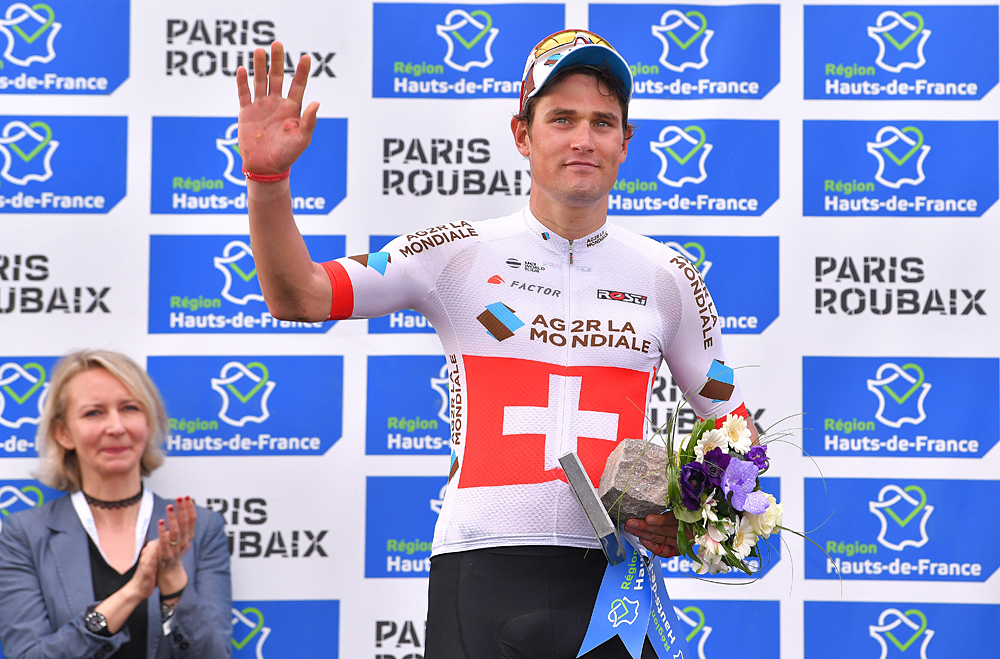
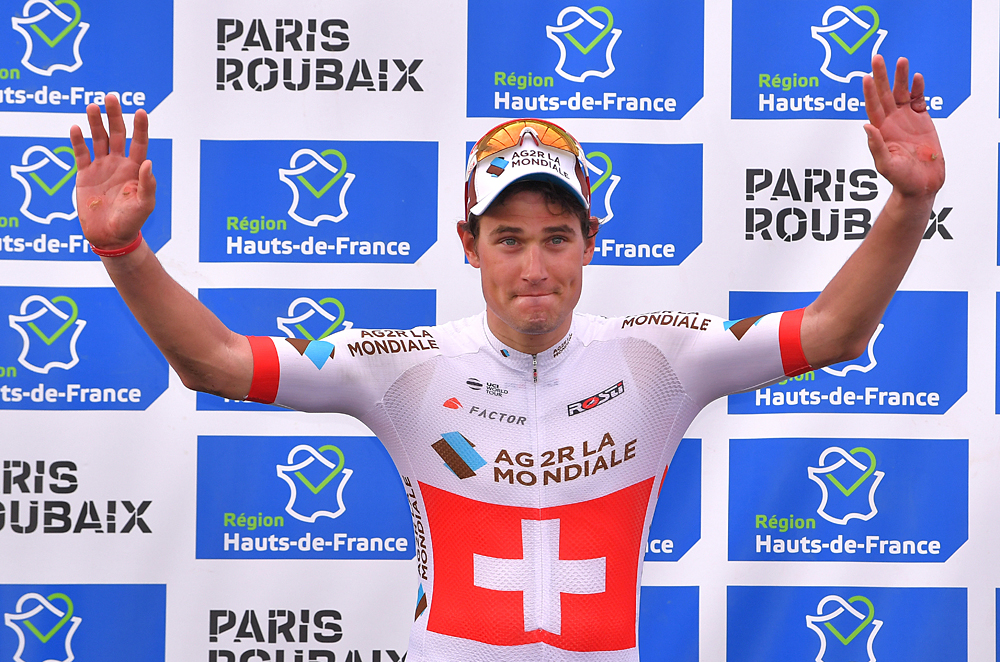
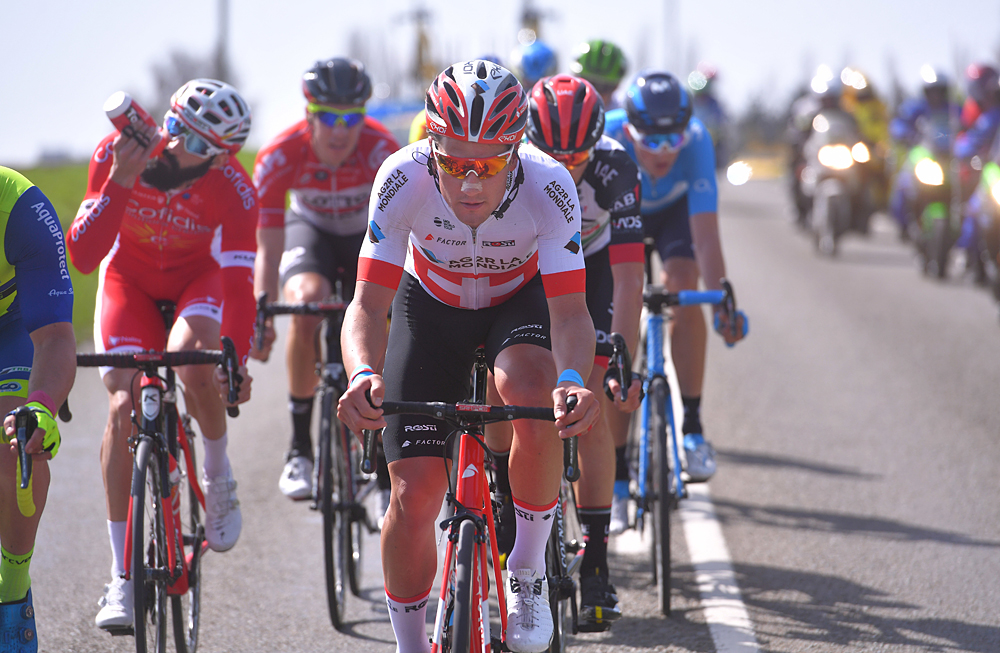
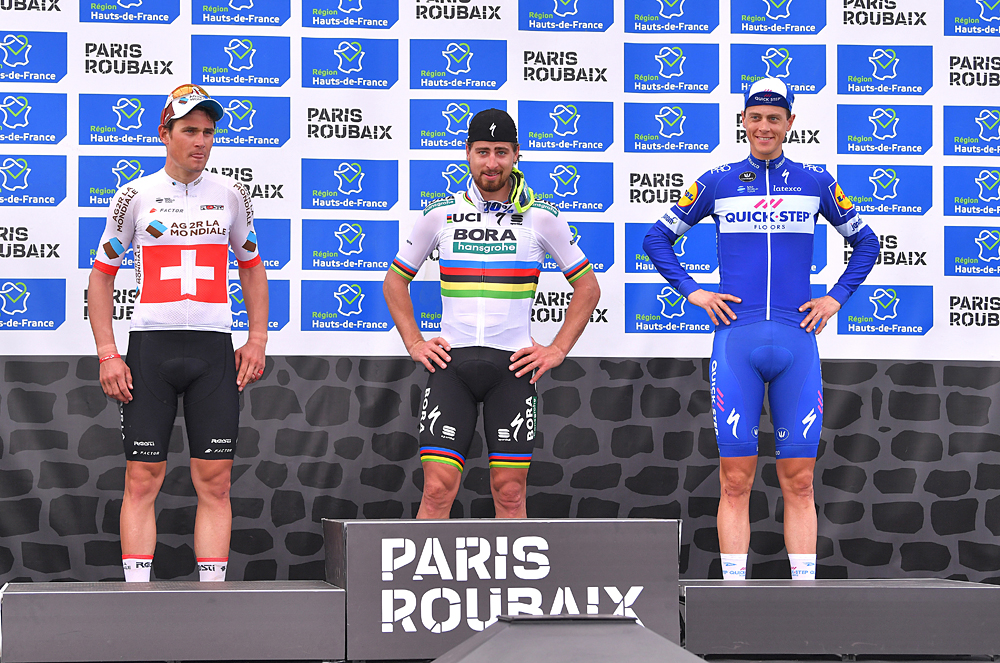
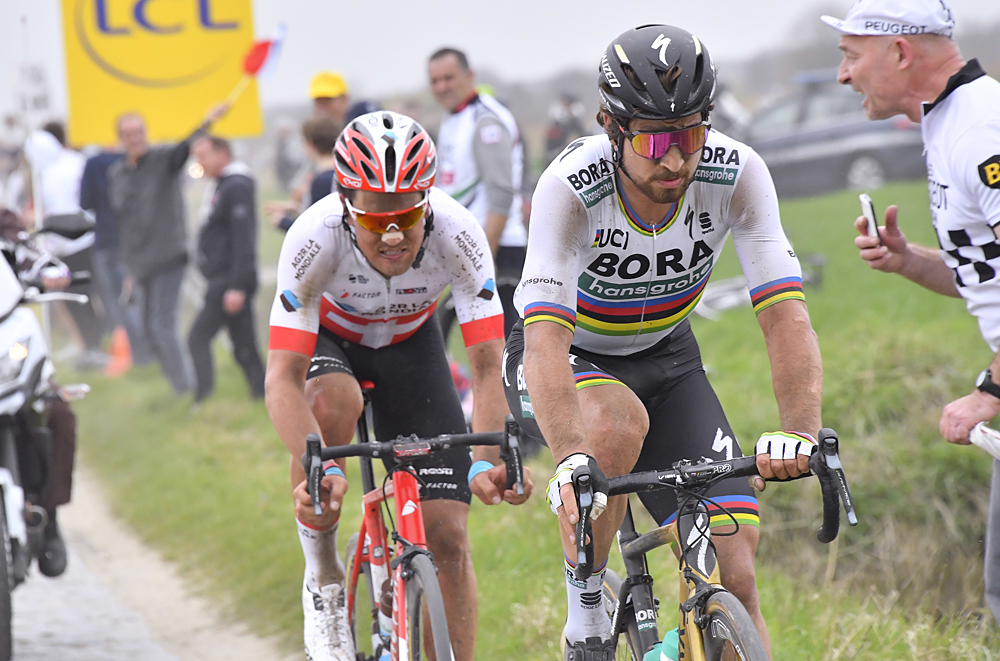
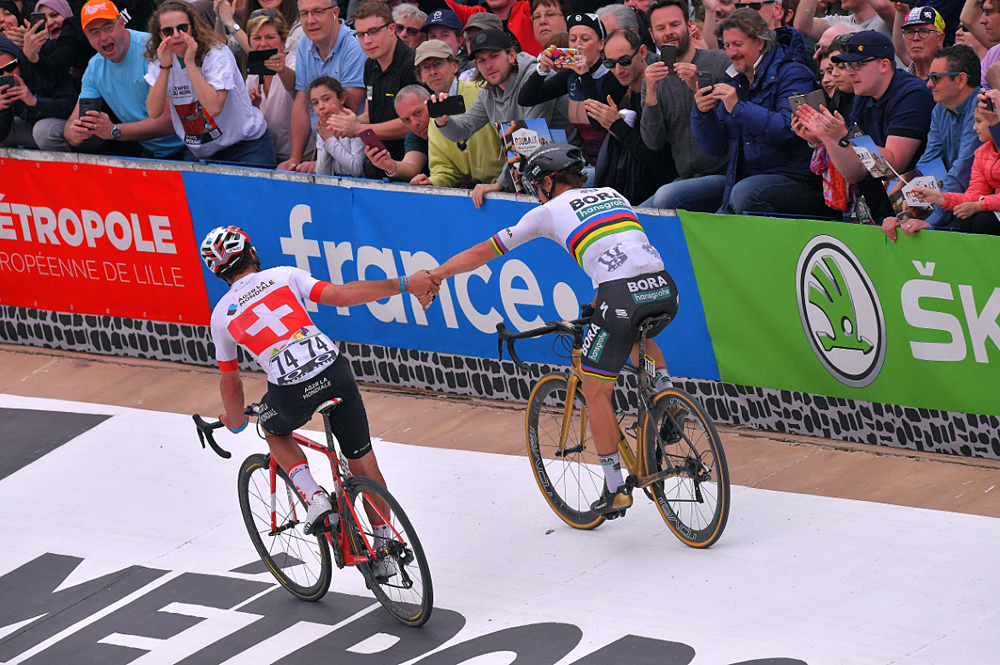
Amid the tumult of Paris-Roubaix, it can be difficult to tell friend from foe. Glancing over his shoulder on the cobbles at Bersée, Silvan Dillier (AG2R La Mondiale) saw a particularly ambiguous figure emerging from the dust behind.
Peter Sagan wins Paris-Roubaix
Goolaerts suffers cardiac arrest at Paris-Roubaix
Peter Sagan: I wouldn't trade a world title for this Paris-Roubaix win
Van Avermaet turns to Amstel Gold after Paris-Roubaix loss
Watch Peter Sagan win his first Paris-Roubaix crown - Video
Terpstra: It was pretty simple, Peter Sagan was too strong
Phinney surprises with a top-10 finish at Paris-Roubaix
Philippe Gilbert: I'm disappointed but there are no excuses
Peter Sagan's Paris-Roubaix winning S-Works Roubaix – Gallery
The rainbow jersey of Peter Sagan (Bora-Hansgrohe) was bridging across to his ragged group of survivors from the early break, and Dillier had mixed feelings about keeping this kind of company in this kind of situation.
Even as he walked through the mixed zone after placing second behind Sagan in a two-up sprint on the track in Roubaix, Dillier was still unsure whether it had been a blessing or a curse to be caught by the world champion.
"With Peter, I would say he's like an angel and a devil in the same person," Dillier said with a wry smile. "An angel because he worked with me very well; a devil, because if you go with him in a man-to-man sprint for the finish line, he's hard to beat."
There were 53 kilometres that separated the leading group from the finish when Sagan joined them, and it seemed implausible that any of their number would manage to keep pace with him all the way to the gates of the velodrome.
Sven Erik Bystrom (UAE-Team Emirates) faded quickly under the weight of Sagan's pace-making. Jelle Wallaeys (Lotto Soudal) lasted considerably longer, but was eventually shaken loose with 26 kilometres to go. Only Dillier kept pace with Sagan, even as the Slovak was adding to his buffer over chasers of the calibre of Niki Terpstra (Quick-Step Floors) and Greg Van Avermaet (BMC Racing Team).
Not that Dillier was simply following. The Swiss champion, a winner last weekend after a mammoth breakaway attempt, had been putting to his shoulder to the wheel all day, and he didn't shirk his workload even in this august company. Dillier contributed his fair share, then clung on for dear life as Sagan looked to put him under pressure on the final sectors before Roubaix.
Get The Leadout Newsletter
The latest race content, interviews, features, reviews and expert buying guides, direct to your inbox!
"I would say I can turn into an animal when I'm in the breakaway," Dillier said. "I showed that just last week in the Coupe de France in Adelie, and I showed that again today. In the breakaway you have to ride the whole day. You don't get the benefit of the slipstream of the other guys, but you're more relaxed on the cobbled sections."
Hayman inspiration
Dillier's long day out at Paris-Roubaix started when he was part of a nine-man group that escaped from the peloton after an hour of racing, and long before they reached the first section of pavé at Troisvilles. His journey to that point was more torturous than most. He was signed from BMC in the off-season to support Oliver Naesen in the Classics, but a broken thumb at Strade Bianche looked to have ended Dillier's Spring prematurely.
The 27-year-old only returned to racing last weekend, though was not deemed ready for the Tour of Flanders. Victory at the Route Adelie put him in contention for Paris-Roubaix, however, and he was confirmed in the line-up after riding three stages of the Circuit de la Sarthe in midweek.
"I took Mathew Hayman as a bit of an example," Dillier said. "He broke his arm five weeks before Paris-Roubaix when he won it two years ago, so that was always a bit in my head. I didn't make it for the Flemish classics, but at the last moment I made the Paris-Roubaix selection."
Hayman famously upset Tom Boonen in the sprint in 2016, and though Sagan's speed and freshness made him the overwhelming favourite here, the old velodrome is the Bermuda Triangle of the Spring Classics, its history dotted with inexplicable phenomena. There was the usual loud cheer and then a familiar, anxious hush as the two leaders circled the stadium.
"I was first into the velodrome, and I stayed on the outside for the whole time. Peter started his sprint at the same time I thought of starting mine," Dillier said. "Peter just accelerated faster and it was impossible to beat him after that."
Oliver Naesen, 12th on another day blighted by ill fortune, made a point of freewheeling onto the crash in the centre of the velodrome after the finish to commiserate with his teammate, who was still struggling to decide whether his disappointment outweighed his satisfaction.
"I'm very happy that I was in position to fight for the win, and a little disappointed that I didn't manage to win," Dillier said. "Still, I was there with the best rider of his generation in a sprint for Paris-Roubaix, so I can't be too disappointed. I'll just hope to go one better in the years to come."

Barry Ryan was Head of Features at Cyclingnews. He has covered professional cycling since 2010, reporting from the Tour de France, Giro d’Italia and events from Argentina to Japan. His writing has appeared in The Independent, Procycling and Cycling Plus. He is the author of The Ascent: Sean Kelly, Stephen Roche and the Rise of Irish Cycling’s Golden Generation, published by Gill Books.